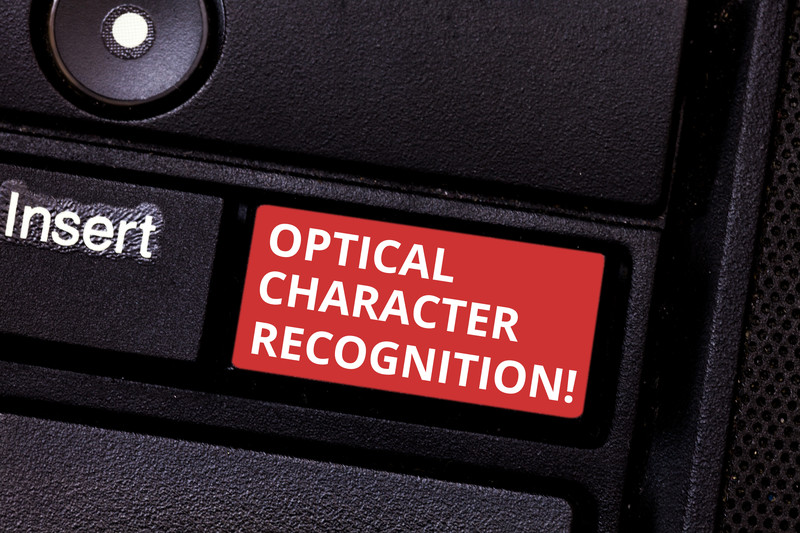Optical Character Recognition (OCR) is the mechanical or electronic conversion of images of handwritten, typed or printed text into machine text. It is mainly used as a form of data entry from printed paper data records. During the process, OCR algorithm identifies characters from printed documents and converts them into a searchable and editable digital format. Experienced data entry companies provide OCR solutions and OCR cleanup services that will help raise the quality of the document conversion process.Insurance companies collect tons of data and this information needs to be processed regularly. As the main application of OCR technology is in industries where a lot of data entry happens and numerous printed records are to be decoded, it is crucial to the ongoing digital transformation of the insurance industry. Using OCR and intelligent character recognition (ICR), a reliable data entry company provides error-free, timely data entry services for insurance companies.
- Improves customer service – Before the emergence of OCR, insurance companies scanned paper documents and converted everything into digital image files. These companies would then perform a manual indexing operation on each document, which requires a person to re-key data. However, this method is error-prone, inconsistent, difficult and expensive, due to human involvement in manual indexing. In addition, manual indexing is impossible to implement in many cases. For instance, a large insurance company that receives more than 20 million documents a day may not be able to hire enough staff to process the data manually and even if they could, re-keying that volume of content would create considerable delays in the downstream workflow. These delays could negatively impact the customer experience. People usually approach their insurance company when they are dealing with a crisis such as fire, theft, or a medical issue, that requires immediate resolution. Delayed payments can create added stress and destroy good faith in the customer service of an organization. In addition, consistent delays can result in deteriorating client satisfaction and retention rates. However, an insurance company could address this issue by creating a portal and app that enable customers to scan or upload their documents. After uploading the content, it can be put through an OCR process to return a fully text-searchable PDF document that is ready for automated sorting and analysis. This would help the company increase the value of the data capture process remarkably. This approach would also help save time as well as money, reduce errors and increase customer satisfaction.
- Helps attract more clients – OCR enables an organization to do a better job than their competitors, when it comes to matching their products and services to customer needs. Some organizations now have online solutions that permit potential customers to upload a copy of their current insurance policy. This in turn allows automated analytics tools to analyze the policy and then compare it to the company’s own products to find out whether they can offer the client better or cheaper protection. While manual processes may not be capable of handling front-end data capture efficiently, OCR automatically transforms client documents into accurate data in a format suitable for automated analysis.
- Reduces costs – OCR enables insurance companies to reduce costs by eliminating manual steps in their data capture methods. For instance, an office had 35 employees manually reviewing and re-keying incoming documents on a full-time basis. This process required a lot of time and was really expensive. However, after implementing an automated OCR process, this office was able to reduce their manual workforce to just two people at the front-end of their data capture process. The switch from manual indexing to an automated OCR process resulted in reduction in the resources required to onboard data. In addition, it could also reduce errors and omissions from five percent to as little as two percent.
- Enables more accurate predictions – OCR can be applied to the vast volumes of legacy data, which companies may have accumulated over their lifespan. OCR can convert these warehouses of data into formats that are usable by Artificial Intelligence (AI) or Machine Learning (ML) software such as IBM’s Watson or Google’s AI libraries. These tools can then analyze that historical data to make predictions about trends in marketplace, customer behavior and emerging risks. For instance, some insurance companies use OCR along with an AI solution to identify health-related changes in customer behavior over time. These companies feed OCR-processed historical client data into an AI solution and combine that with OCR-processed data from external sources such as census information, clinical trial results, medical studies or lifestyle questionnaire results. This information can be used to find out trends that result in lower payouts or fewer claims such as lower disease and mortality rates. On the basis of these predictions, an insurance company may change the cost-versus-risk assumptions in affected products, or create entirely new products altogether. In fact, a very large amount of content can be fed into OCR software which generates cause and effect predictions and identifies massive datasets. As automated OCR process is usually error-free, the business can extract maximum value from their data to make meaningful predictions and exploit the true power of AI.
OCR is an advanced technology that enhances the data capture and management process and improves automated workflows in the insurance industry. By utilizing OCR, companies can provide better customer service, attract more clients, reduce costs, and even predict marketplace trends, risks, and customer behavior.



